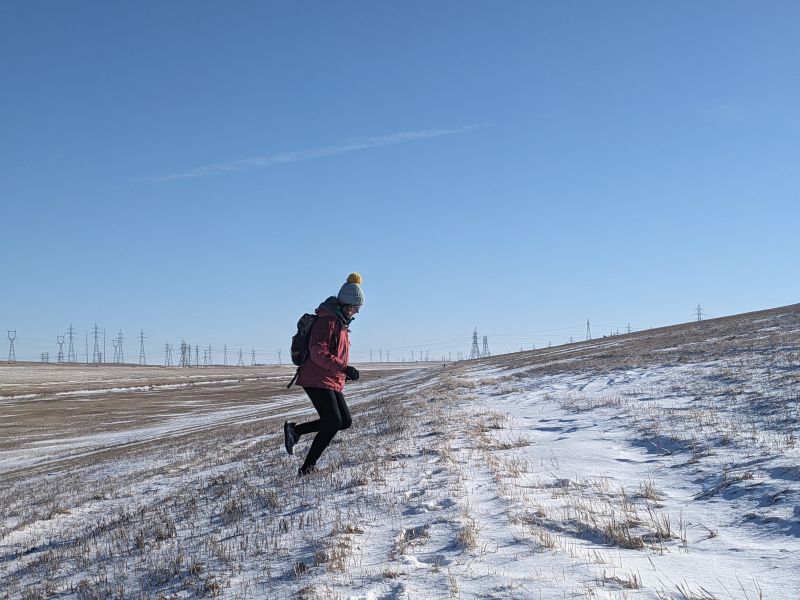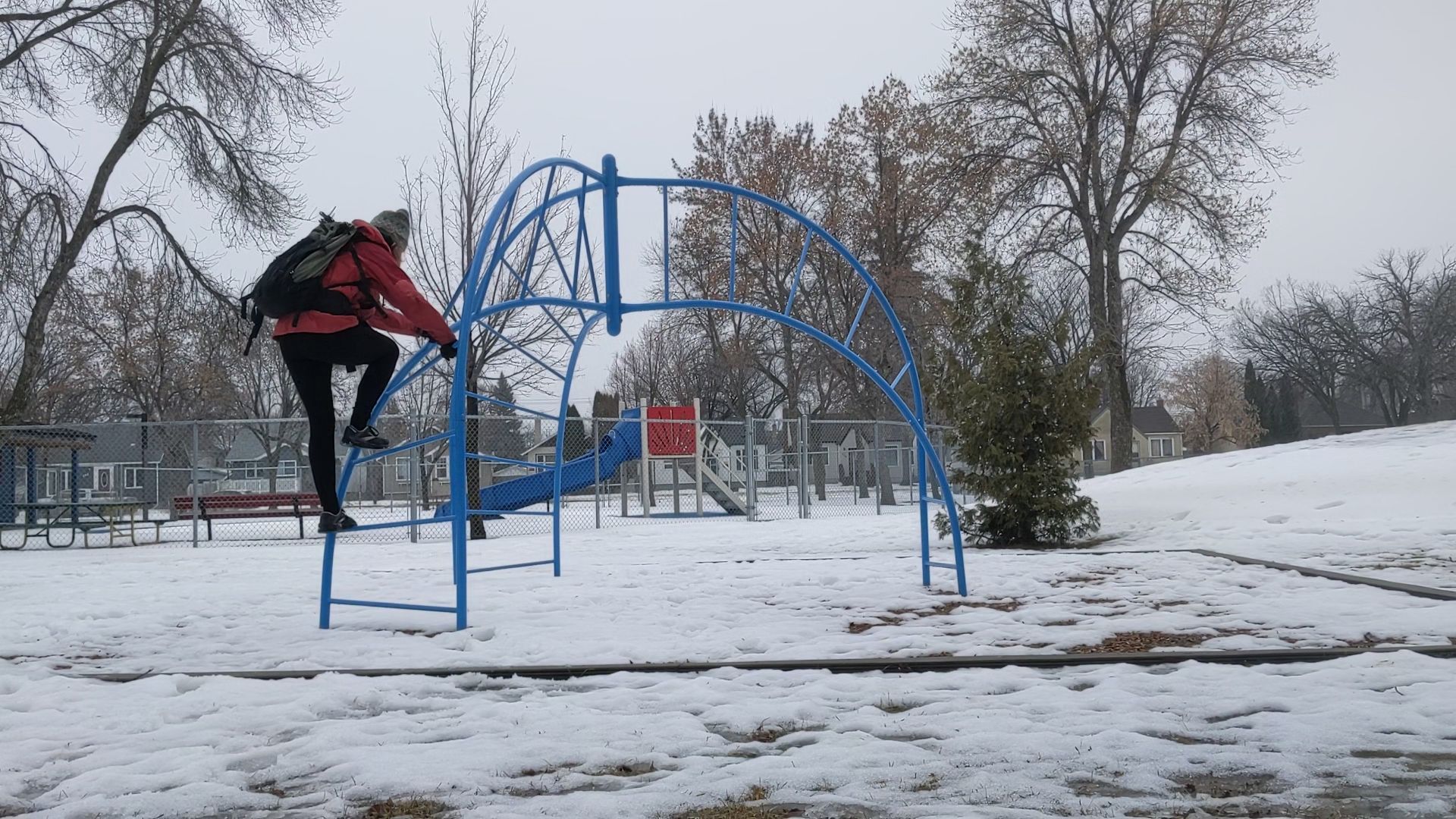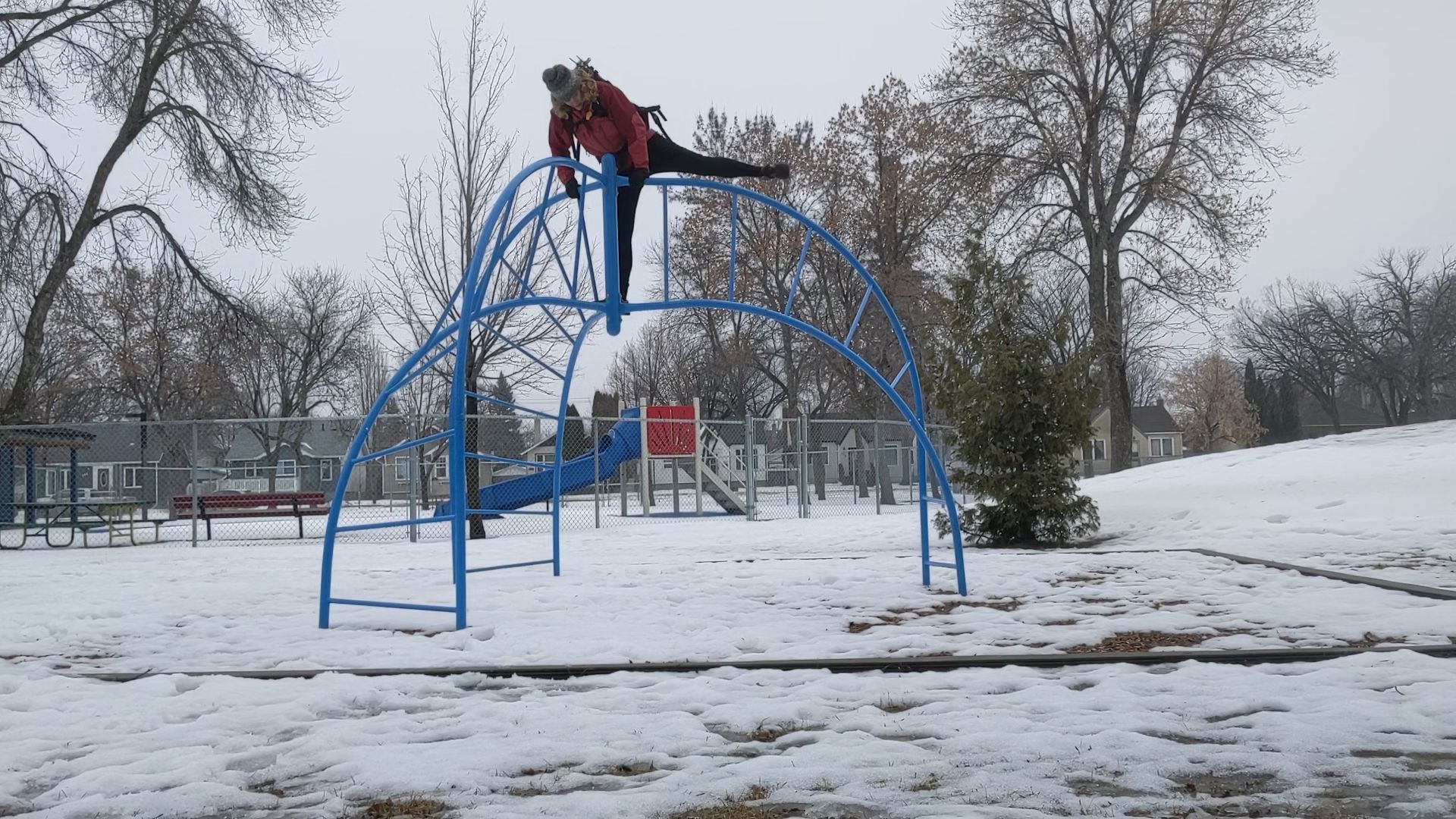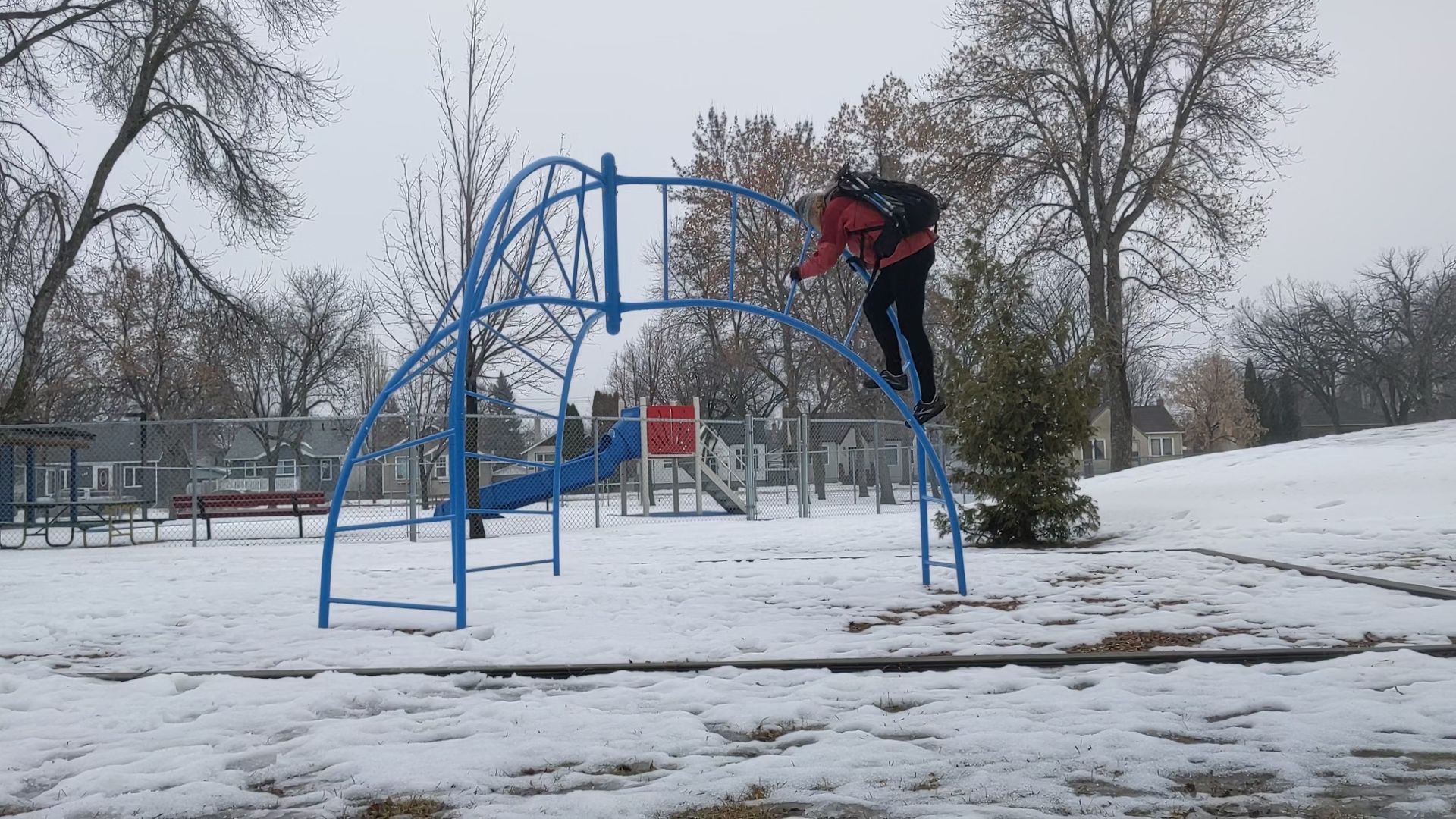How to Train for the Trail in an Urban (or Flat) Environment
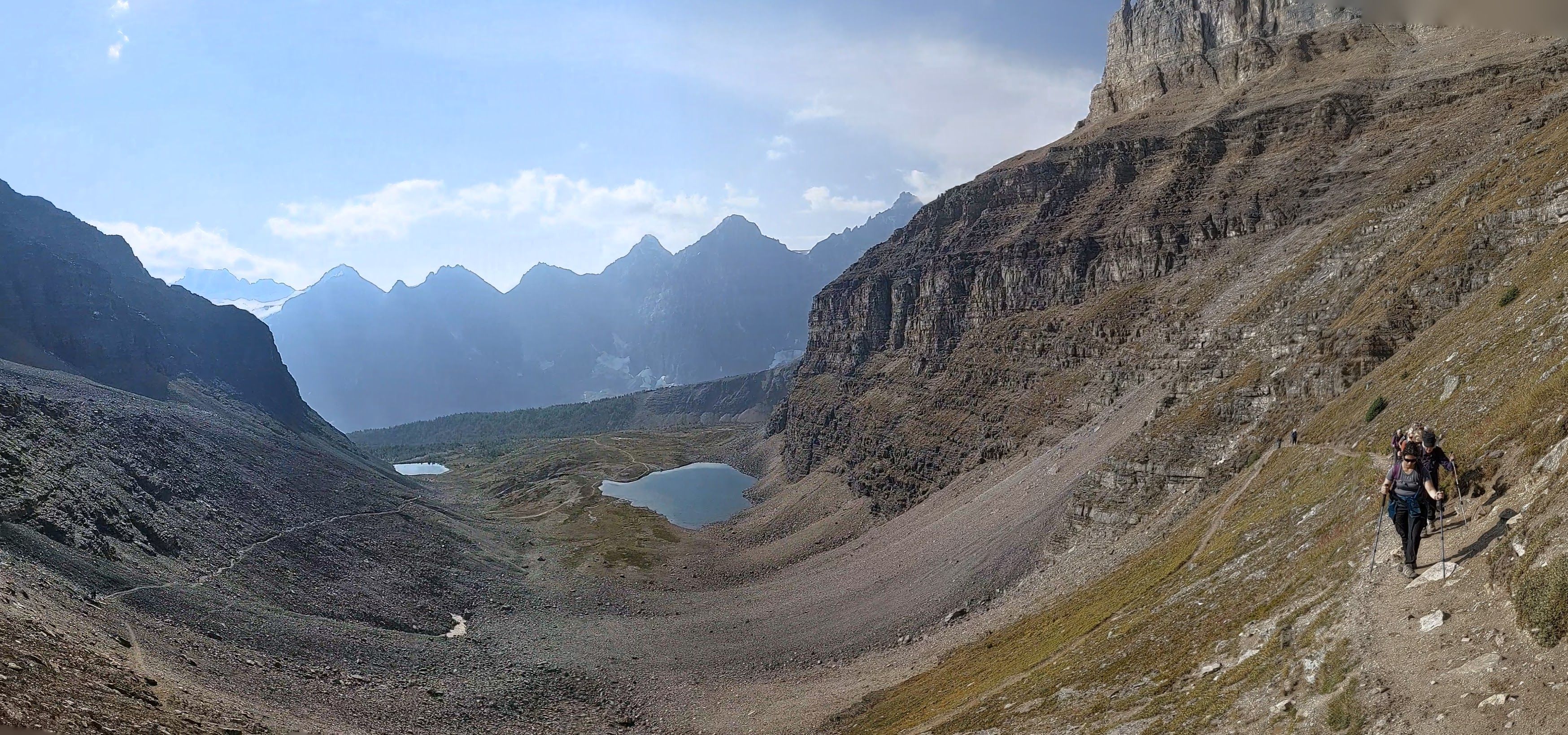
To be ready to slog up the hills, you need to put the time in for dry land training.
You've booked your trip, you've got your gear organized and now you want to focus on training for your big adventure but... you don't live near the mountains (or are not able to access them on a regular basis for training).
No worries!
We've got a few tips and tricks to help you prepare for your big adventure. It just takes a bit of creativity and setting aside the time to train.
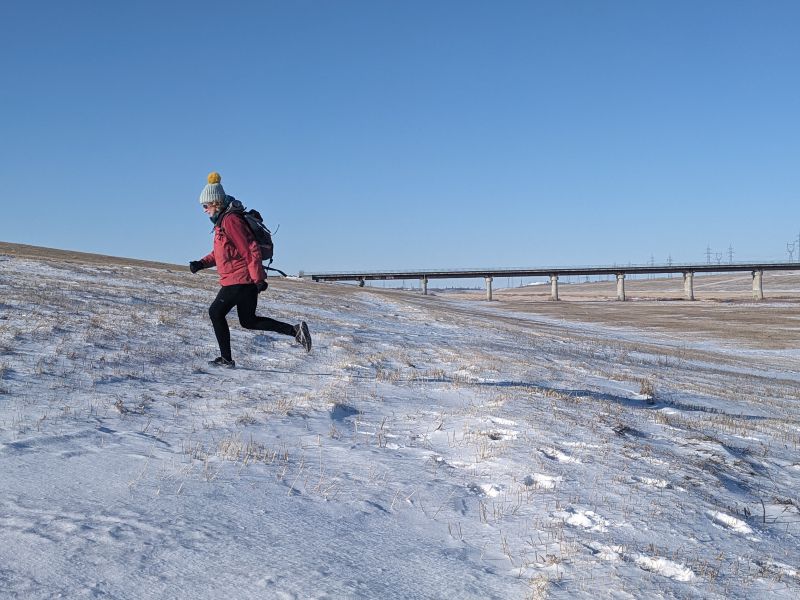
Get Outside Guide Sarah Fuller getting creative training hills in the Red River Floodway.
Six Week Hiking Fitness Program
The first recommendation is to check out our 6 week hiking fitness program. This program focusses on building leg strength, core strength, and heart/lungs for hiking uphill. It also includes exercises for upper body movements to tune in that part of your training as well. (Click the green button below for more information).
Tuning in to the Trail
One of the questions that often comes up with guests not based in the mountains is :
"How do I train for specific terrain/ challenges if I don't have access to that terrain?"
A good way to approach this question is to think about the terrain you will be encountering on the trail and try to mimic that in the urban environment. A few years ago after a particularly challenging lap on the West Coast Trail, my fellow guide Susan and I realized it could be helpful for guests to train more specifically for the demand that the WCT put on upper body strength and balance.
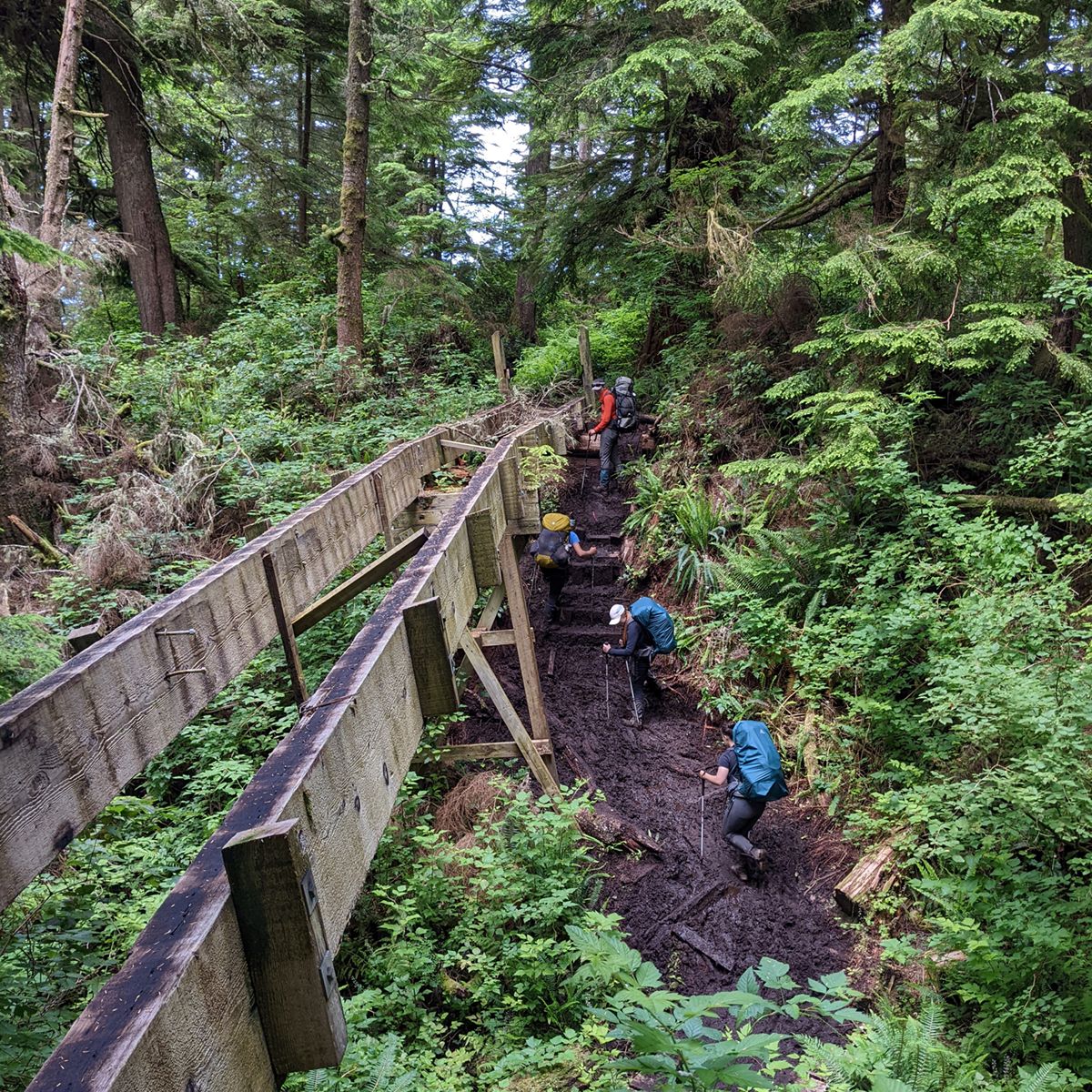
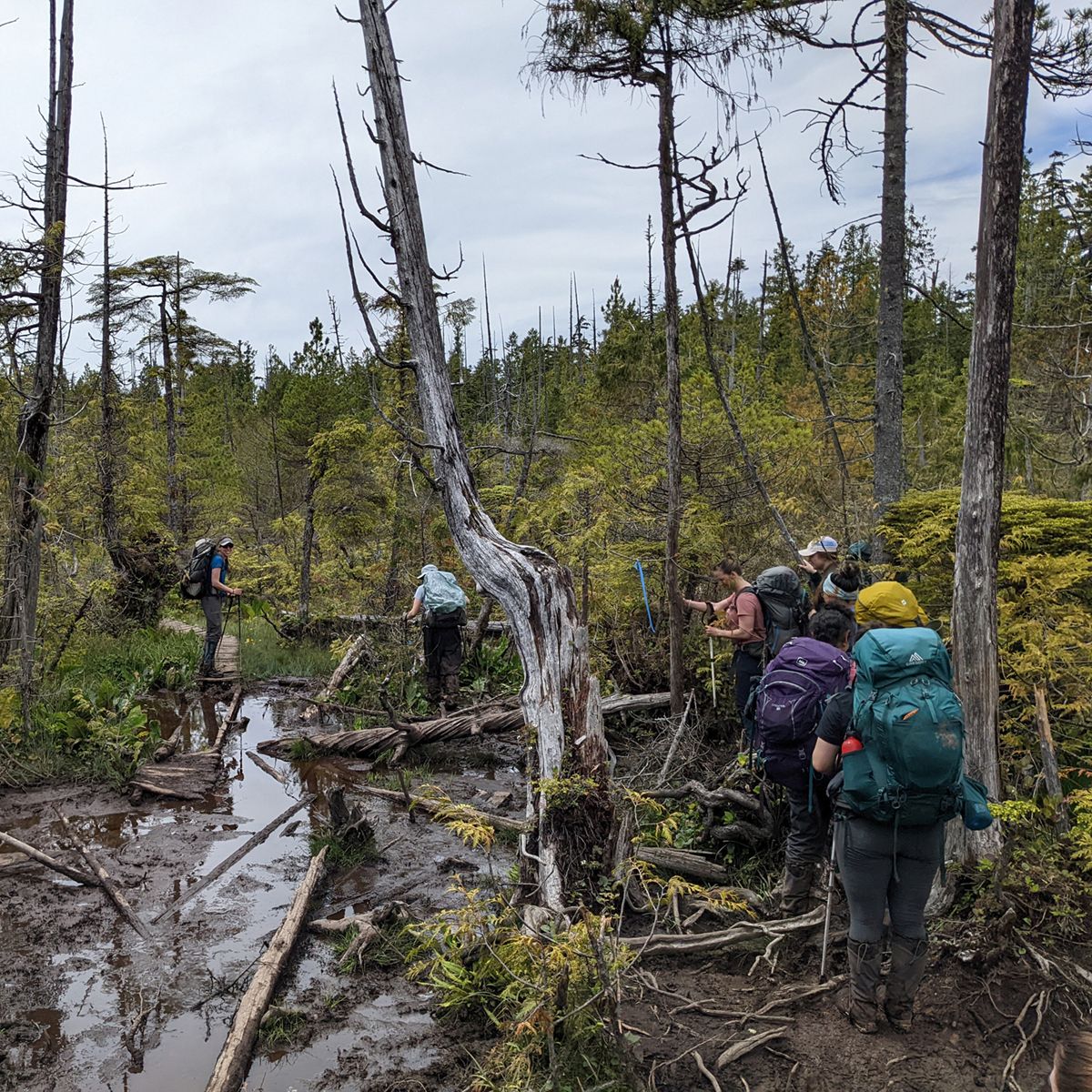
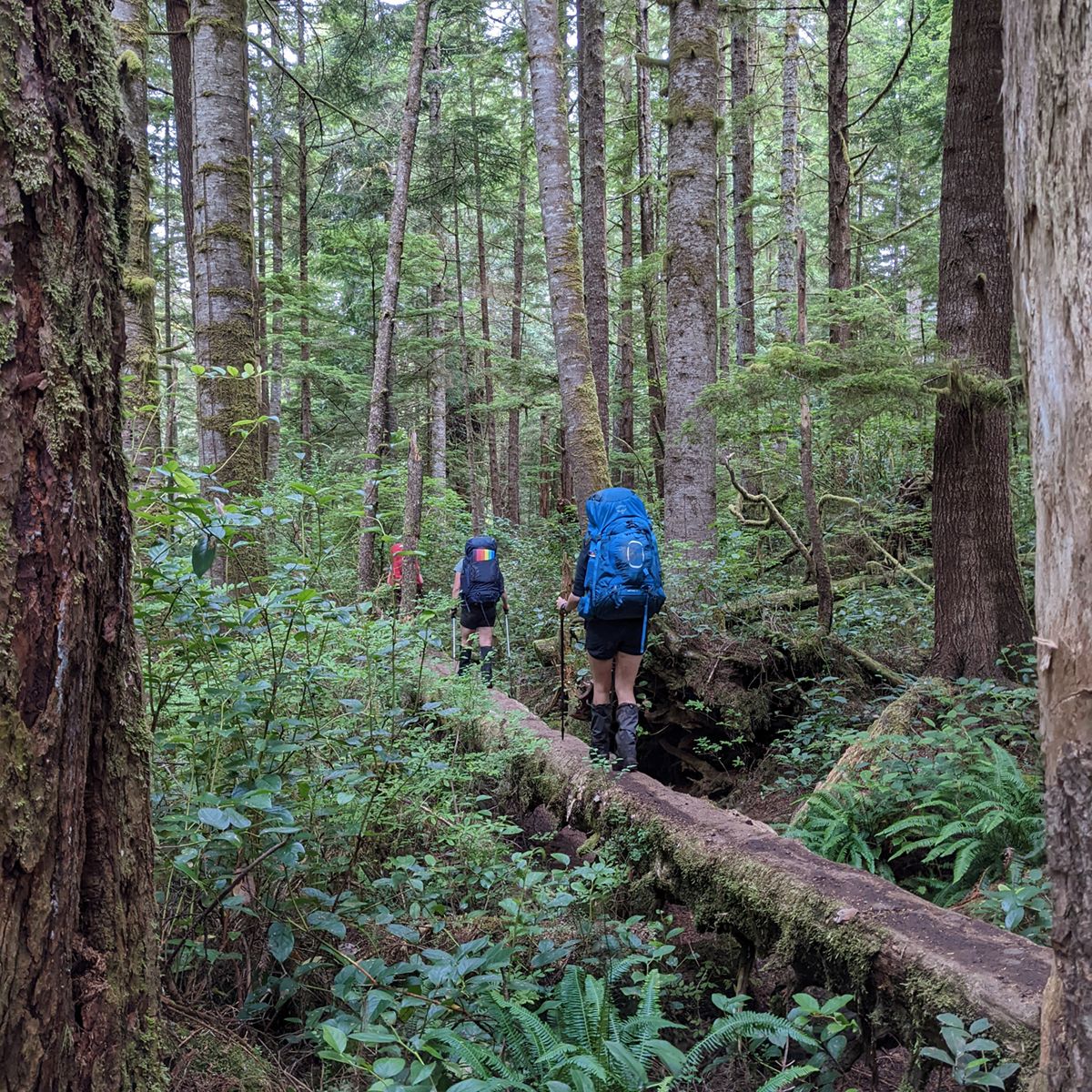
A variety of dilapitated, boggy and balance-y terrain on the WCT, 2022.
Hiking on a flat, well maintained trail – or even a steep, rambling mountain hike – does not mimic the precarious and balance-y aspects of the WCT. One of the ideas that we came up with as a possible training ground were urban play structures.
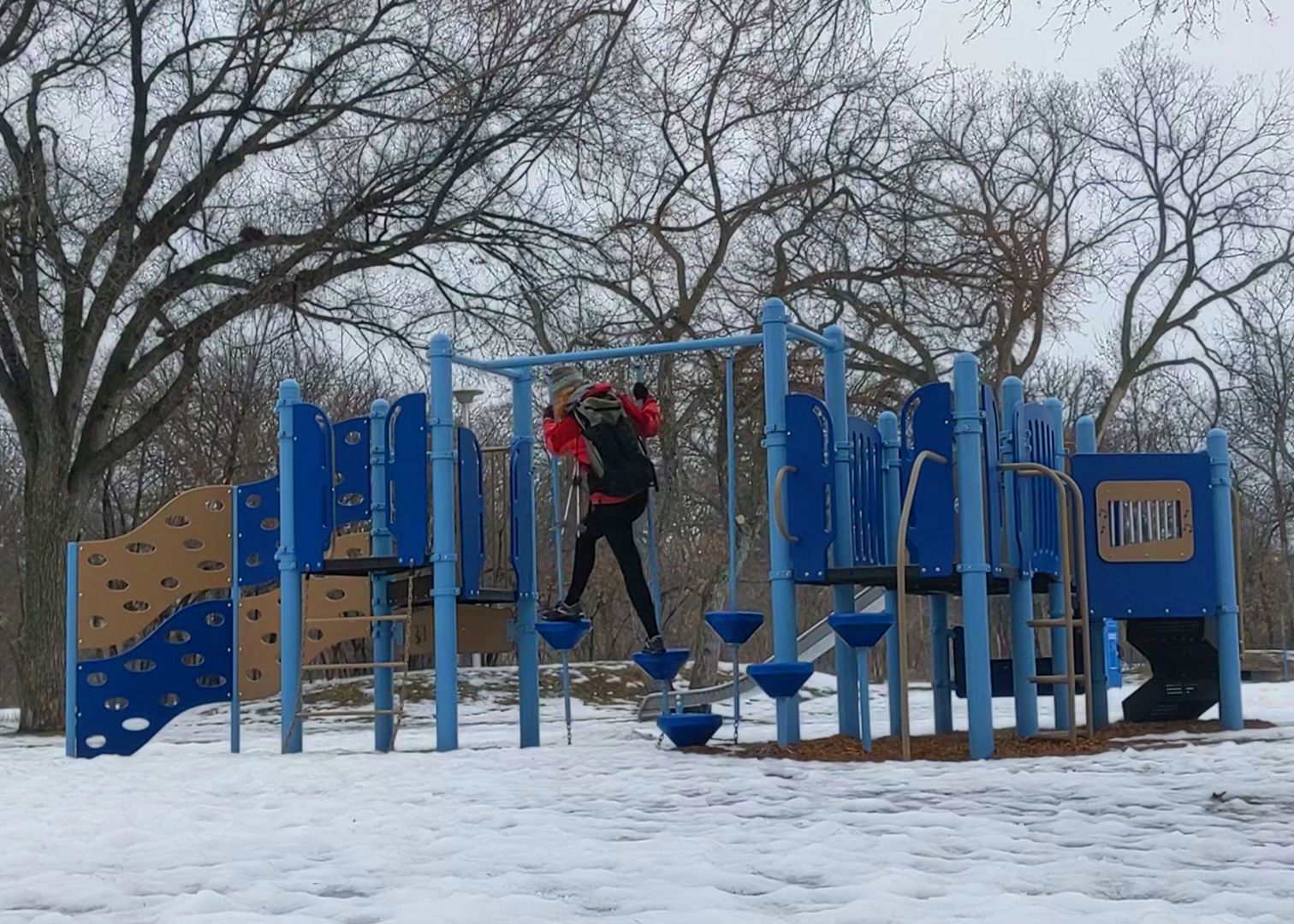
The author navigating the tenuous terrain of an urban play structure.
As wacky as this might seem, some play structure components actually replicate the tenuous movements encountered in the bogs and logs of the WCT. Similar types of movements can also be found on some scrambly sections of hikes in the Rockies. For example, the descent down from Sentinel Pass into Paradise Valley requires a similar type of balance and use of hands for navigating the terrain.
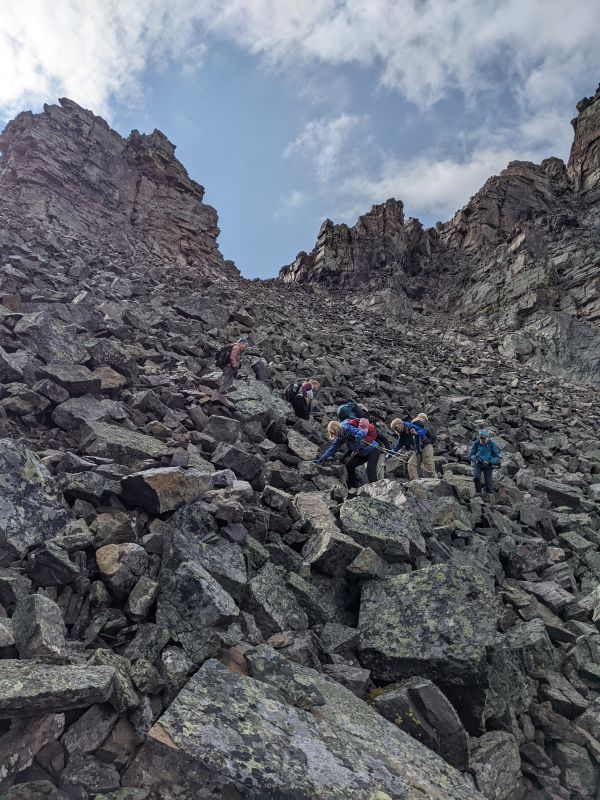
A group of hikers descends boulders and large scree on the descent from Sentinel Pass.
Another type of infrastructure encountered on the WCT in particular are ladders – about 70 of them (!) – so it's a good idea to train for this as well. An important part of this training should be practicing climbing ladders with your pack on. It doesn't have to be a full multi-day backpack, but it should have a decent amount of weight and bulk to train yout body into moving vertically with weight.
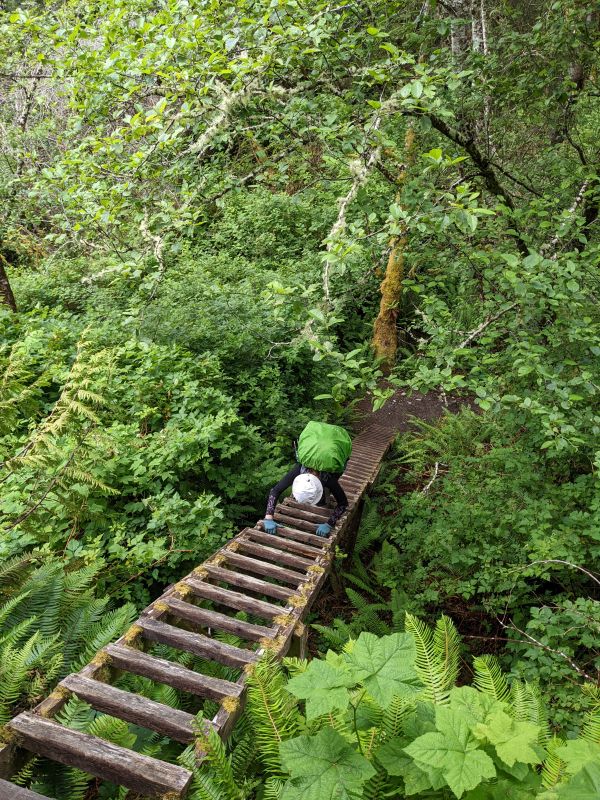
The last ladder en route to the North Trailhead at Pachena Bay, WCT.
If you have a ladder to train on at home that's an good option. You can start without anything in your bag and slowly add weight each week that you train.
If you don't have a ladder, the local playstructure could come in handy again. I found this ladder system in a park near to my house that replicated both climbing up and down ladders, as well as the movement of crawling up and over logs.
Seek Out Stairs
You may not have access to hills in your city, but there is a good chance you can find stairs. Like Rocky Balboa running up the steps of the Philadelphia Museum of Art, stairs are good go to when trying to build strength and cardio. You don't need to run them – walking up stairs will build endurance and strength too!
If you work in an office building that has an stairway, try to integrate taking the stairs into your daily routine. This could be building 'step breaks' into your afternoon coffee break, or planning a steps session at lunch or at the end of the day.
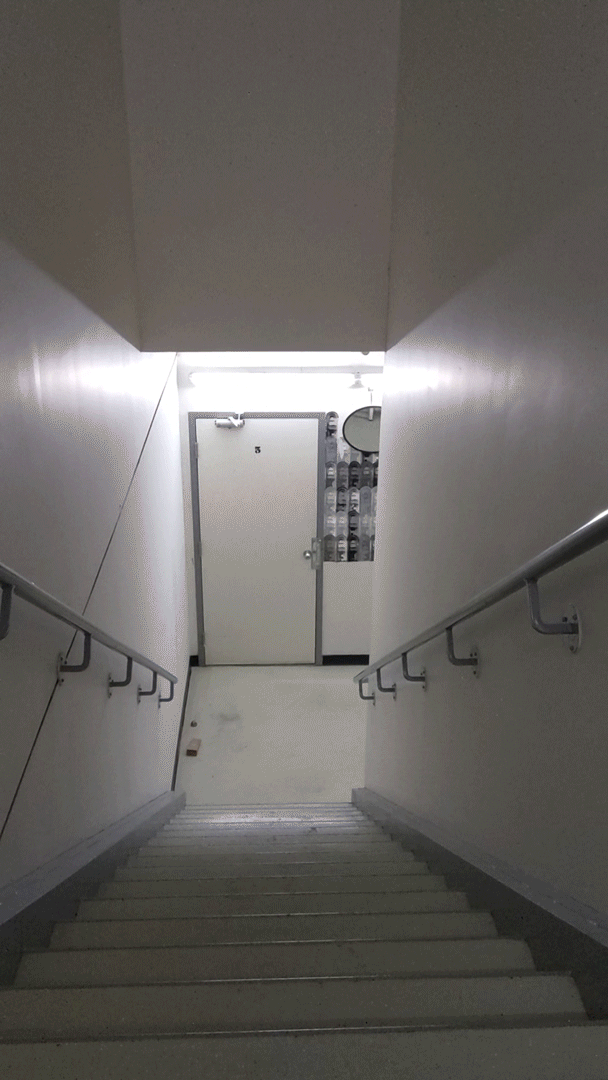
Head for the Hills (or Valleys)
If you are lucky to have hills neaby (or river valleys), integrate training days in that terrain to help build strength and cardio. Even if they don't look like much compared to the mountains you plan to hike in, getting mileage on terrain with some amount on elevation builds up cumulatively over time.
Whatever you do, build a consistent training regimen into your planning for your trip. This will contribute to a safer trip for you and your hiking buds, will reduce the likelihood of injury on the trail and will allow you to enjoy the trail.
